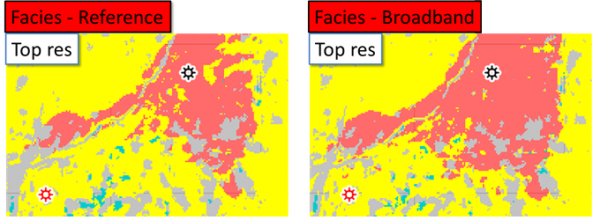RokDoc WellTie
RokDoc WellTie and RokDoc Advanced WellTie for wavelet estimation
Well-ties form the basis of seismic interpretation and also allow a quantitative analysis of the seismic phase, frequency and other attributes. Good well-ties are essential for quantitative seismic workflows such as inversion and reservoir characterisation. Conventional Wavelet estimation is performed using the frequency domain least squares method (White, 1980) along with QC measures on PEP maps, delay maps and the various statistics produced from this analysis to determine the well tie quality.
EAGE E-Lecture - "Well Tie: Principles & New Advancements for Broadband Seismic Data" by Ikon's Ehsan Naeini
In this video presentation, Ehsan discusses a quantitative approach to do well tie and to QC the outcome. This covers the basic principles all the way to the latest developments for broadband seismic data. He shows some synthetic and real data examples and highlights the impact of time lag, phase, bandwidth and broadband wavelets for broadband seismic.
RokDoc Advanced WellTie module based on Zabihi Naeini et al. (2016) consists of three new techniques with different mathematical backgrounds.
Parametric constant phase: A pragmatic approach is to use a constant phase approximation over the entire seismic bandwidth. This uses fewer degrees of freedom than estimating a phase spectrum and has some empirical basis in that, after processing, the phase of seismic wavelets is often approximately constant across the seismic bandwidth. When only a short log length is available this approach is especially suitable as, in practice, allowing the phase to vary with frequency could be unreliable. A sophisticated least squares based method has been implemented to derive stable amplitude and phase spectra (see Zabihi Naeini et al., 2016 for details). If required, one can modify the phase at the low frequencies towards zero frequency using the approach proposed by White and Zabihi Naeini (2014).
Frequency domain least-squares: We use exactly the same machinery and approach as White (1980) but we modify the auto- and cross-spectra calculation. Whilst traditionally Papoulis tapers are used to taper the auto- and cross-correlation estimates and then Fourier transform, we propose the use of multi-tapering on data segments, Fourier transform and then compute the auto- and cross-spectra. The advantage of using multi-tapers is in reducing the smoothing and leakage bias and has been discussed in more details in White and Zabihi Naeini (2014) and Zabihi Naeini et al. (2016)
Time domain Bayesian least-squares: Gunning and Glinsky (2006) introduced a well tie algorithm formulated in the time domain as a Bayesian inverse problem. The algorithm simultaneously estimates all the wavelet coefficients and the Bayesian formulation allows one to incorporate uncertainties associated with the time-depth mapping, positi

